CRICKET
INNINGS
A diagrammatic representation of shots played by a cricketer (Sir Don
Bradman) during his innings. by Irene Sutton, a manuscript illustrated
diary"TWENTY SIX DAYS" reproduced in Lettering of Today,
ed C.G.Holme, The Studio, London 1945 (1937)
COMPARATIVE
COST -
Bus Tickets
This man's ecstatic response would suggest either an unhealthy interest
in the economics of travelling by bus, or some other source of bliss nearer
to hand. His wife, with a rakish tilt, compares bus tickets with the annual
cost of living, furnishings, clothes, homes and food to prove they're
better off travelling by bus rather than sofa or vegetable. I very much
admire this mixing of dimensions and outlandish response in a diagram.
There is no reason for graphic information to be purged of human interest.
It's just there's more interest than most demonstrated here. The campaign
ran in 1948, this shows a detail of one full page ad.
MAGIC
The Sphere of Pythagorus , redrawn from an MS in the English Monastery
of Echternach, in the ninth century and commonly found in English medical
books before 1500 as a device for calculating the details of a person's
illness.
From Charles Singer, From Magic to Science , Benn, London 1928,
RETURN
DECORATIVE
MAPS
LEFT Helen
Carter
An illustrator of great versatility. The more even and sensible work seemed
to win the prizes. Given a challenging subject, here the world of pre-historic
animals, she surpasses herself in colour and animation. Her maps are lively,
vivid and clear without losing their ability to inform. From Raymond L.Ditmars
and Helene Carter, The Book of Prehistoric Animals, Harrap
London 1935, and originally published in America. Permian Types (p.8 18
x 22 cms)
RIGHT Heywood Sumner (1853 - 1940) A member of the British Arts and Crafts
group with a particular fondness for history and its impact on the environment.
He developed from a rather embarrassing admiration for William Blake,
to a straightforward and deceptively drawn illustrative style. One saving
grace was an early identification with the archaelogical exactitudes of
legends and myth. In his drawings for The New Forest and Stonehenge ,
he achieves a real sense of place, and a decorative drawing style that
sits well with the need to record what is there. At his best he can achieve
the true intimacy of Edward Calvert with heavy rhythmic lines.
image from The New Forest , published by Charles Brown
& Son, Ringwood 1925 (1st ed 1924)
This measures 16 x 24 cms, and is typical of the Sumner painstaking approach.
As you would expect from an artist with Arts and Crafts associations,
he pays close attention to neat and legible letterforms.
HOUSES
IN DIAGRAMS
Margaret and Alexander Potter Interiors , Murray London
1957 "A record of some of the changes in interior design and furniture
of the English Home from medieval times to the present day." Because
this type of work appears in old text books for schools, its skills and
graphic efficiencies are often overlooked. Margaret and Alexander Potter
specialised in such books, always well designed and informative without
being dull. Margaret Potter was born in 1916 and since 1944 has concentrated
with her husband on bringing information to a wider public. Alexander
Potter became Emeritus Professor of Architecture at Queen's University,
Belfast in 1975.
DIAGRAMS
OF STRUCTURES
REPRESENTATIONS
OF TORTURE
Antonio
Gallonio, De SS Martyrum Cruciatibus, Rome , 1591 with
engravings by Antonio Tempesta after Giovanni de Guerra of Modena. The
images here presented are from an early 20th century reprint published
in Paris (FORTUNE Press 1903). The translator, A.R.Allinson, coyly admits
that the popularity of the book is not entirely an admiration of stoicism
and the sufferings of those who died for their faith. " Deep down
in our poor human nature lurks the love of blood, a remnant of the primeval
beast happily slinking away beforte the dawn of the better times. "
The text and images are obsessive in their detail of cruelty and suffering.
The expertise and means required in this classic to render the intricacies
of torture place the work among the Classics of Information Design. Many
of the images are profoundly shocking, particularly the decorative arrangement
of instruments that cause pain. The martyrs go to their respective Fates
with a casual elegance and often cheery grin.
DIDEROT'S
ENCYCLOPEDIA
To describe
processes.
Vol II plate III , Fonderie en caracteres .Printing; the three figures
almost describe a cinematic unfolding of the process, the setting up of
the type on the Stick (figure on the right); the figure in the middle
shaves the burrs off the type, and the figure to the left, the Finisher
cuts a groove up the back of the row of letters. Racks for the rows line
the walls (Vol 2, plate III).
Plate XVI, The Printing Press, the printing process together with a plan
of the machine. There are two presses. On the left the journeyman spreads
the paper while an assistant inks the type. The plate opposite shows a
plan from above of the press they are working upon.
Vol V, Marbeur de Papier, Pl II; the figures wax, polish and fold the
paper that has already been printed for the decorative embellishment of
the inside boards of the book. The furthest figure is applying the painted
water to the edge of the book itself.
The Furrier, Vol IV Fourrier, plate V; This is a highly specialised shop,
stocking not the range of fur products but only Muffs which line the walls
with mathematical regularity. A stove heats the interior.
The worker with the animal skins would not have been in the place of display,
but the image reminds us of the eighteenth century combination of retail
and manufacture.
Vol VIII
Patissier Pl1. the interior of the Bakery, with the preparation of pastries,
sweet and savoury. Oeconomie Rustiques, Mouche à Miel ; although
the image appears to be an instant, it is really a catalogue of possibilities;
the various types of hive and the materials used (glass, straw, wood etc).
The foreground hive has been selected for particular favour. It is made
with a clay base and a straw superstructure. The figures demonstrate aspects
of the trade ; from the agitation of the bees with a stick ; scaring away
an invading swarm etc.
The prospectus
for the Encyclopédie. Paris 1751
EXPLAINING
TO CHILDREN
MATHEMATICAL
R., Infantile Erudition, including the Figure Dancers...
Tabart London 1810
from Percy Cruikshank, Comic Multiplication , Read, London, 1864.
MUSICAL
concepts
Interesting concept- teaching with narrative pictures; from The Child's
Pictorial Music Book, published by Kellog, Hartford, Conn., 1842. GRAMMAR
an engraved sheet published in 1802, to teach grammatical rules and conventions,
measuring about 34 x 54.
INDUSTRIAL PROCESS
Dubious Area this - not just selling your product with images designed
to impart information to children but also creating an extended narrative
whose major function is to explain the industrial manufacturing process.
Is it entertainment ? Is it propaganda ? It's a Rolled Oat.
Grace Hallock, Travels of a Rolled Oat , illustrations
by Jessie Gillespie, published by Quaker Oats' School Health Service of
London. Other British manufacturers include Reckitt and Colman (a huge
output of children's books on Mustard, Starch and Blue) and the big Oil
Companies.
ABSURD
INVENTION
Rube
Goldberg The Inventions of Professor Butts, The Automatic
Picture Snapping Machine.
The Dictator is of course Joseph Stalin.
Heath Robinson,
advertisement for Mackintosh's Toffee De Luxe, the Quality Sweetmeat,
published in The Passing Show November 5th 1921, and measuring 16 x 17.5
cms. "The Latest Toffee Testing Machine testing the Smile Value of
Toffee De Luxe."
FROM
HERE TO THERE
With this
diagram a sports' commentator communicated moves and situations to the
radio listener in America, from Modern Mechanix, December
1935. A variant was also used in the UK with Association Football
United Air Lines advert May 1952. 24 x 26cms. White planes are in the
air, yellow planes are grounded.
LONDON
TRANSPORT
The London
Transport Diagram
Harry Beck completed his schematic map for the London Underground System
in 1933. Its graphic development was the subject of a comprehensive article
by Ken Garland in the Penrose magazine. Here is an image which as far
as I know hasn't been used as evidence of the problem. As always, PUNCH
finds a visual expression for the issues of the day. In the period 1905
to 1914, PUNCH 's cartoons regularly reflected the anxieties and spectacle
of travelling by "Tube". PUNCH September 1st 1909 p.162.
STRIP
CARTOONS in the Service of Information
The development of the comic strip as means of instruction, or at least
education, needs further study. Most popular magazines of the 20th century
included information in this form, even if adverts that told a simple
tale of product purchased and ensuing personal triumph. Two men particularly
gave the genre a seriousmness - Will Burtin working on instructional manuals
for raw(and illiterate recruits) to the American armed forces, and Will
Eisner who gave up drawing The Spirit to work for governmental agencies
in Turkey and elsewhere on instructional campaigns.Here are some classics.
1. Nick
Sprank .
Informational Pages from Modern Mechanics , each page 16 x 24cms. July
1935 December 1935
2.
Ripley's Believe It or Not, an example of instructional material
in comic strip format, through which many people actually got their education.
3. Ripley's
Believe It or Not, the Founder doffs his hat.
LOOK
UP YOUR ATLAS
from T.C.Bridges
and H.Alnwick, Look Up Your Atlas, Harrap London 1943,
a visually immediate way of communicating complex economic information
in wartime, without excessive rules and with brilliant colours. Here charts
of comparative temperatures. 24.5 x 18 cms. from T.C.Bridges and H.Alnwick,
diagram to represent comparative ratios of landmass to population.
DIAGRAMS
OF MUSICAL PERFORMANCE
IMAGES AS
Music TUTORIALS -
Dedicated to the ways in which diagrams give precise information as to
how things are done. The images are intended for publication and thus
must be clear to a wide range of readers.
Gaspar Sanz Instruccioni de Musica sobre La Guittara Espanola Dormer,
Saragossa 1697. usually 3 volumes with many engraved illustrations
an instructional manual for the playing of the lute, published in Gerona
in 1745 and clearly based on Sanz above. It is debateable as to the freedom
within the medium of woodcutting to depict exactly the position of the
fingers on the frets. The lettering has however its own peculiar character.
Paixao Ribiero, NOVA ARTE DE VIOLA , Lisbon 1764.
Boethius, Musica Venice 1492 and the first theoretical work on music in
Western Europe during the Christian period.
Lodovico Fogliani Musica Theorica Nicolini Venice 1529
from Hans Gerle Musica Teusch Nurenburg 1532
Rene Des Cartes, Excellent Compendium of Musick Thomas Harper 1659
PIE
CHARTS AND SLICINGS
a pie chart
representing national opinion on the reelection of President Roosevelt
(unidentified publication) 1938 measuring 13 x 15 cms
from Assen Jordanoff's Your Wings , Funk and Wagnell, New York, 1940 (1936)
with illustrations by Fred Meagher, Frank Carlson and Eric Sloane. expenditure
per dollar at American Airlines in 1940., measuring 9 x 14cms.
Showing how the value of general purpose computers in operation compares
from January 1961to January 1964 [FORTUNE June 1964 p.115 ]
General
Mills advertisement September 1947, and a clever variant on the Pie, 11
x12 cms
POWER
CHARTS
The Election
of the Doge, Venice in 1789
ON
THE BACK OF AN ENVELOPE
The ways
in which diagrams, quickly drawn, convey the information, and also communicate
a sense of urgency and the immediate.
LOOK - a sketch of Stalin's Office c1950
The composer Richard Wagner sent a letter in the mid 1880's including
a diagram of how the orchestra ought to be arranged in the pit for a concert
of music by Flatow, Bellini and Donizetti.
The painter Henri Matisse explains in a letter to an American patron how
the latter's wife might mix her oils for painting, dated 1942. The balance
of essence and oil .
THE
WALLCHART
No doubt this graphic display was less forbidding in colour - Inspector
Daryl Gates lectures his men , c 1963.
THE
TOURNAMENT
The Book of Tournament presented aspiring knights and horsemen with exercises
and demonstrations. Here are two that were to be practised at home. Johann
Georg Pascha, Kurtze iedoch grundliche Beschreibung des Voltiger
, Hall in Sachsen, c1665.
|




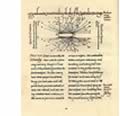
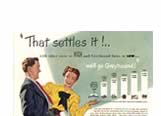
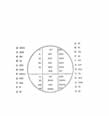
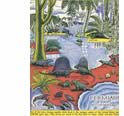


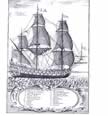
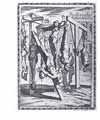





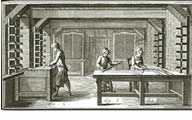


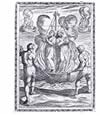


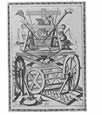

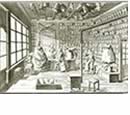

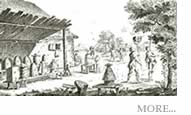
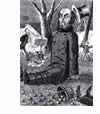

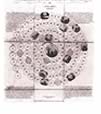


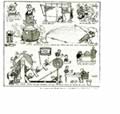



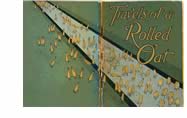












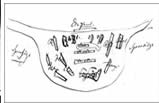




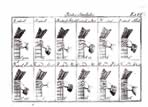

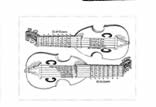




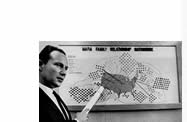

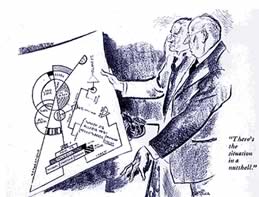
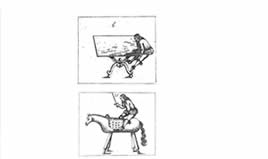





 HOW TO TIE A BOW TIE
HOW TO TIE A BOW TIE